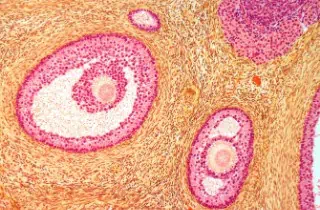
Mast cell activation and histamine can play a role in premenstrual syndrome (PMS) and premenstrual dysphoric disorder (PMDD).
That’s why mid-cycle, premenstrual, and perimenopausal mood symptoms can be relieved by antihistamines and natural histamine-reducing strategies such as quercetin, vitamin B6, SAM-e, and a dairy-free diet.
 Vitex (also called chaste tree or chasteberry) is a herbal medicine prepared from the berries of the Mediterranean tree Vitex agnus-castus. In ancient times, it was used to suppress the libido of monks, hence the name. Fortunately, it does not have that effect on women.
Vitex (also called chaste tree or chasteberry) is a herbal medicine prepared from the berries of the Mediterranean tree Vitex agnus-castus. In ancient times, it was used to suppress the libido of monks, hence the name. Fortunately, it does not have that effect on women.
